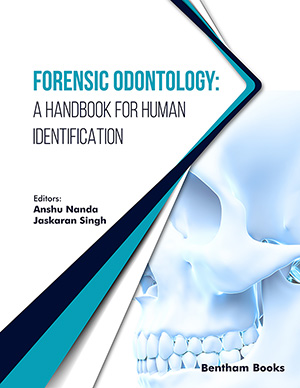Abstract
All dental data offer information for a timely, cheap, and effective human
identification process. Dental autopsy and dental data-analysis can be pivotal in
disaster victim identification to such an extent that failure to employ odontologists can
reduce additional findings and delays in the DVI process. Partial and full dentures
found-alongside the remains can offer information on the dental history, the material
employed, dietary and sociocultural information, and when jaws are fragmented or
disarticulated, offer a possible technical response on the number of individuals
involved. Particularly relevant are the printed palatal rugae in the palatal surface of the
upper denture. An individual wearing one or two full dentures is obviously totally
edentulous. In the upper, lower, or both jaws, family members living together will
surely be aware of this circumstance. In the interview for the collection of antemortem
dental data, they were asked specifically about any dental prosthetics or orthotics worn
or used by the deceased. Greater emphasis should be placed on recording and archiving
patients’ oral health data, including material specifications of fixed and removable
prosthetics, encouraging the use of digital and electronic oral health records and
international collaboration in the DVIscenario, and employing teleconsultation tools.
Keywords: Dentures, Dental prosthetic, Dental autopsy, DVI, Forensic odontology, Identification, Mass disaster.






















